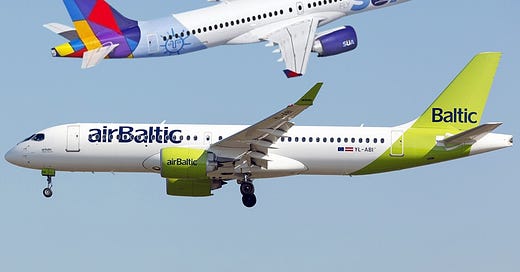The Latin American Renaissance : SUA
The dawn of a new paradigm in South American aviation has just begun.
Uruguay’s tourism minister Eduardo Sanguinetti has recently signed an agreement to establish the Sociedad Uruguaya de Aviación Aereas Lineas (SUA), Uruguay’s latest flagship airline that will finally allow it to replace the defunct national carrier PLUNA that had collapsed in 2012. Is this a harbinger of a renaissance in Latin American aviation, or just another unsuccessful attempt that will end in chaos?
SUA is primarily going to be powered by A220s that are going to be supplied by airBaltic—they have a range of 6,300 km, much larger than the 2,870 km range of PLUNA’s former Bombardier CRJ 900. This longer range brings the entire continent of South America within reach. This is important as currently, international flights to and from Uruguay are handled exclusively by foreign carriers, limiting flying options for Uruguayan residents. SUA thus may introduce additional direct connections to continent-wide destinations while also potentially lowering ticket prices through competition. Direct flights to cities such as Montevideo, Buenos Aires, São Paulo, Santiago, and Asunción will eliminate layovers and streamline travel within South America. SUA will make business and leisure travel more convenient and affordable for passengers. Additionally, SUA's competitive pricing relative to legacy carriers should lower the cost of regional air travel, particularly for the middle-class audience that has previously been underserved by South American airlines like LATAM.
Within three years, SUA intends to increase its fleet to ten aircraft, creating 300 direct and 1,500 indirect jobs in Uruguay. This growth is consistent with the sector's ongoing expansion in the region. SUAs would contribute greatly to Latin America’s revival as they will boost international and intercontinental visitors to Uruguay and other Latin American countries. This will have direct impacts on hotels, restaurants, transportation services, and other local companies, which will benefit the surrounding economy.





